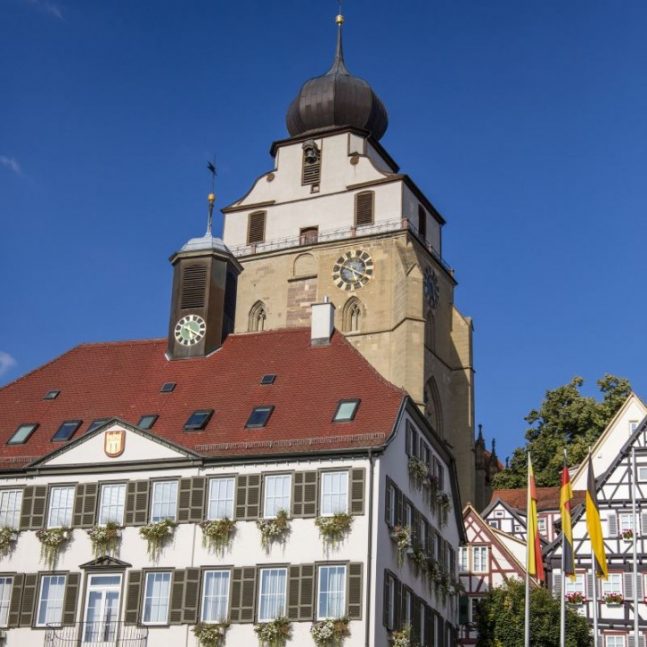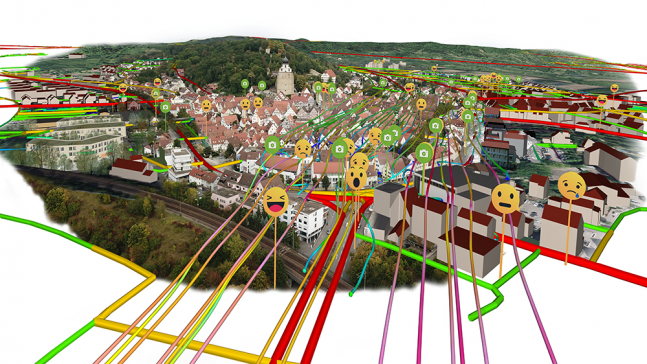
This article was originally published by Sarah Wray on Cities Today, the leading news platform on urban mobility and innovation, reaching an international audience of city leaders. For the latest updates follow Cities Today on Twitter, Facebook, LinkedIn, Instagram, and YouTube, or sign up for Cities Today News.
Tourists may soon be able to explore the picturesque cross-timbered houses and historic churches of Herrenberg via virtual reality (VR), thanks to a digital twin developed with the High-Performance Computing Center Stuttgart (HLRS).
TNW online events
Our Couch Conferences bring together industry experts to discuss what’s next
Nicolai Reith, Head of the Control and Communication department and advisor to the Mayor of Herrenberg, told Cities Today: “You don’t have to make a decision and then see [what happens]; you can see before you make the decision what the effect will be via the digital twin. This makes it easier to make the right decision for our city council, politicians, and citizens.”Herrenberg is already using the digital twin, which incorporates super-computing and technologies typically deployed in advanced aerospace, to visualize city data and citizens’ emotional responses to inform better decision-making.
There are now plans to develop the emerging area of virtual tourism for the town, which has a population of around 31,000.
“We have a very beautiful city center so tourists can explore it in a digital way with VR glasses before they come to Herrenberg, which is an interesting benefit for the future,” Reith said.
[Read: UK cities trial ‘red carpet’ crosswalks to reduce pedestrian accidents]
Building a digital twin
HLRS developed Herrenberg’s digital twin together with the Fraunhofer Institute, the University of Stuttgart, and Kommunikationsbüro Ulmer, starting with a concept called ‘space syntax’.
Dr. Fabian Dembski of HLRS said: “Just as the human skeleton provides a scaffolding for all of the other systems and functions of the human body, space syntax produces a 2D outline of physical grids in a city, offering a framework for performing spatial analysis, such as predicting the likely paths that car or pedestrian traffic might take to move from one point to another.”

The team then added in geographic information system (GIS) data and traffic control systems data to incorporate topography, road geometry , and detailed traffic flows. Using the open-source fluid dynamics code OpenFOAM — which is typically used for modeling fuel injector sprays or airplane aerodynamics —they also created realistic models of the movement of wind and emissions through the city.
In addition, the HLRS team developed an app inviting Herrenberg residents to share feedback on whether certain locations in the town feel comfortable, unsafe, or ugly, for example.
Dembski said: “Emotions like joy and fear, the aesthetic experience of green space and architecture, and other emotion-driven factors play a major role in the success of urban design but are very difficult to represent in architectural models or simulations. Our approach is an early attempt to gather and incorporate these complicated datasets.”
The town’s leaders have used the digital twin’s interactive and immersive visualizations to consult with citizens more widely on projects such as a local shopping center.
“Citizens could see the area in a digital way, even before it was finished, and that brings a higher [level of] acceptance. This is a really interesting thing for us,” Reith said.

Dembski’s team also plans to explore how artificial intelligence (AI) applications could be used to better represent the wide range of factors that affect how residents emotionally experience their city or town.
“We would like to start including larger-scale, more dynamic phenomena in our model,” he said. “This could include factors like regional migration, the effects of gentrification, and the growth, shrinkage, settlement patterns, and overall social and economic resilience of cities. Considering the complex data sets needed to quantify such activities, we will need even more computational support, and we think that artificial intelligence applications could also help.”
Just the beginning for city digital twins
Dembski told Cities Today the use of digital twins by cities is “only at the beginning” but is progressing quickly, especially in Asia.
We shouldn’t overestimate the technology, though, he noted. “Cities are not machines,” he commented. “A digital twin can be a great help in reducing complexity for cities, assessing measures at an early stage, and explaining interrelationships. But there are many aspects that are deeply human and cannot be reproduced in digital copies, such as culture, interpersonal relationships, joy, and happiness. A digital twin is a tool, not a solution.”
He added: “I also think it is important for cities to retain control over data and models,” urging co-operation between science, city administrations, businesses, and citizens.
Read next: Study: Volcanoes on Mars were to blame for massive mud flows, not lava
Corona coverage
Read our daily coverage on how the tech industry is responding to the coronavirus and subscribe to our weekly newsletter Coronavirus in Context.
For tips and tricks on working remotely, check out our Growth Quarters articles here or follow us on Twitter.


